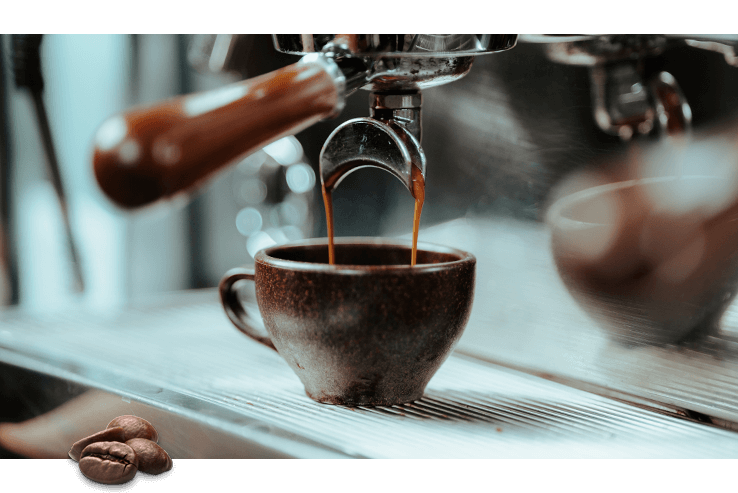SOE Single Origin Espresso – A Great Gift for Coffee Aficionados
SOE Single Origin Espresso – A Great Gift for Coffee Aficionados
Blog Article
Exploring the Abundant Tastes of Coffee Beans: a Deep Dive Into Coffee and Blended Coffee Beans
When you discover the abundant flavors of coffee beans, you reveal a complicated world where each selection brings its own personality to your cup. As you browse with the art of espresso and the creativity behind combined coffees, you'll begin to value the subtleties that make each sip unique.
The Beginnings of Coffee Beans: Checking Out Terroir and Flavor Profiles
When you take a sip of coffee, you're not simply taking pleasure in a drink; you're experiencing an abundant tapestry of flavors formed by the beans' origins. Each area produces one-of-a-kind flavor accounts influenced by climate, elevation, and soil. For circumstances, beans from Ethiopia usually rupture with intense, fruity notes, while those from Colombia often tend to use a balanced, nutty sweetness.
As you discover different origins, you'll discover just how terroir-- the environmental elements influencing a crop-- plays a crucial duty - Single Origin Espresso. The exact same coffee range can taste drastically various depending on where it's grown
When you think about these elements, you start to value the complexity behind your cup. Each sip narrates of the land and the farmers that supported the beans. So, following time you indulge, think of the trip your coffee took prior to it reached your hands, and savor those elaborate flavors that mirror its origin.
Recognizing Coffee: The Art and Scientific Research Behind the Mixture
When you consider espresso, it's not nearly the strong taste; it's additionally about the techniques that bring it to life. Understanding how various prep work techniques effect taste can change your developing experience. Let's explore the intricacies of coffee preparation and uncover the unique taste profiles that make each mug unique.
Espresso Preparation Strategies
Espresso preparation is both a science and an art, combining precise strategies with a deep understanding of coffee. To start, you'll want to pick high-grade, newly roasted beans and grind them finely for perfect removal (Single Origin Espresso). The work size is essential; as well coarse, and your coffee will certainly be weak, also fine, and it'll be bitter
Next, tamp the premises evenly in the portafilter to assure uniform removal. When you secure it into the maker, goal for a developing temperature in between 190 ° F and 205 °
F.As you pull the shot, expect the best extraction time-- around 25-30 seconds. The outcome needs to be an abundant, creamy coffee with a beautiful layer of crema on the top. With method, you'll master these strategies.
Flavor Accounts Discussed
The globe of espresso offers an abundant tapestry of taste profiles that can raise your coffee experience. You'll observe an equilibrium of sweetness, level of acidity, and resentment when you take that first sip. Each espresso bean carries distinct notes, from fruity and flower to nutty and chocolaty. Light roasts often showcase brilliant level of acidity and vibrant flavors, while dark roasts present deeper, bolder tones.
A well-crafted mix could harmonize the intense notes of an Ethiopian bean with the rich, chocolatey touches of a Brazilian bean. Welcome the trip of finding coffee's varied tastes, and you'll transform your coffee routine right into an exciting experience.
Processing Methods: Just How They Impact Flavor and Aroma
While it may seem that the beginning of coffee beans is the most substantial consider establishing their taste and fragrance, the processing techniques made use of post-harvest play a similarly crucial duty. You'll locate that these methods can substantially modify the final preference profile of your mug.
For instance, the washed process eliminates the fruit from the beans prior to fermentation, typically bring about a cleaner, brighter taste. The natural process leaves the fruit intact during drying, resulting in a sweeter, fruitier profile.
Various other methods, like honey processing, strike a balance, permitting some fruit mucilage to continue to be, providing a special complexity.
Each processing strategy connects with the beans' intrinsic characteristics, boosting or silencing specific flavors and fragrances. When you drink that coffee or mixed coffee, bear in mind that the journey from cherry to cup is affected not simply by beginning yet additionally by how those beans were refined.
Roasting Techniques: Unlocking the Full Possible of Coffee Beans
Roasting methods are necessary for disclosing the full potential of coffee beans, as they transform raw, eco-friendly beans into the fragrant, savory coffee you take pleasure in. The selection of toasting approach-- light, tool, or dark-- substantially influences flavor accounts. Light roasts protect the beans' natural level of acidity and fruity notes, while tool roasts balance sweetness and richness. Dark roasts, on the other hand, emphasize strong, smoky flavors.
A slower roast at reduced temperatures allows for intricate tastes to establish, while a quicker roast can heighten resentment. By mastering these strategies, you'll expose a world of taste, raising your coffee experience to new elevations.
The Magic of Blended Coffee: Producing One-of-a-kind Taste Experiences
Creating an unique flavor experience with combined coffee can change your morning routine right into an expedition of taste. By integrating different beans from various areas, you can reveal a harmony of flavors that boost your cup to brand-new heights. Each mix offers a distinctive profile, stabilizing sweet taste, acidity, and body to create something absolutely special.
When you pick a blend, you're not simply choosing a coffee; you're selecting a journey throughout diverse landscapes and societies. Try out various combinations enables you to uncover your personal favorites, whether you appreciate fruity notes or rich, chocolatey undertones.

Sampling Notes: Acknowledging the Subtleties in Your Cup
As you click to read drink your coffee, you might observe a range of tastes dancing on your palate, each exposing the intricacies of the beans. You may taste the brilliant acidity evocative citrus or the deep, abundant notes akin to dark chocolate. The sweetness might stimulate honey or sugar, stabilizing the total account wonderfully.
Focus on the body of the coffee-- does it feel light and airy, or is it full and velvety? The coating, too, offers hints; a sticking around aftertaste may hint at nuttiness or floral touches.

Do not neglect their website to discover the unique characteristics of different origins, as each region passes on unique flavors - Single Origin Espresso. As an example, Ethiopian coffees frequently present fruity notes, while Colombian beans could display a much more rounded sweetness. By recognizing these subtleties, you'll strengthen your appreciation for each and every mug, elevating your coffee experience to brand-new elevations

Developing Techniques: Making Best Use Of Taste Extraction for every single Bean
When you check out the various developing techniques, you'll find that each technique can significantly influence the flavor account of your coffee. From French press to pour-over, each technique extracts various compounds, boosting or muting particular notes. Utilizing a French press enables oils to remain in the mixture, producing a richer preference, while pour-over highlights quality and brightness.
Temperature level and grind size additionally play necessary roles. A coarser work works best for chilly mixtures, while a fine work is optimal for coffee. Explore water temperature level-- between 195 ° F and 205 ° F-- can disclose hidden tastes, too.
Do not fail to remember concerning steeping time; a quick removal can lead to sour notes, while over-extraction may generate bitterness. By changing these variables, you can make best use of flavor removal and truly raise your coffee experience. Take pleasure in the trip of uncovering what method finest matches your palate!
Often Asked Inquiries
What Is the Ideal Water Temperature for Developing Coffee?
The optimal water temperature for brewing coffee's in between 195 ° F and 205 ° get redirected here F. If you make use of water that's also warm, you'll over-extract flavors; too chilly, and you won't remove enough. Purpose for that sweet area for the very best mixture!
How Does Grind Size Affect Coffee Taste?
Work dimension substantially impacts coffee taste. Better grinds remove more oils and tastes, resulting in a bolder taste, while coarser grinds return a lighter taste. Adjusting grind size assists you attain your wanted coffee profile.
Are There Health Advantages Surrounding Alcohol Consumption Coffee?

What Is the Difference Between Arabica and Robusta Beans?
Arabica beans are smoother and sweeter, typically featuring fruity flavors, while robusta beans are more powerful with a bitter preference and higher caffeine web content. You'll see these distinctions in scent and brewing experience.
How Can I Store Coffee Beans for Quality?
To keep coffee beans for freshness, maintain them in an impermeable container, away from dampness, warm, and light. If you just grind what you need right before developing., you'll maintain their taste much longer.
Checking Out the Rich Tastes of Coffee Beans: a Deep Dive Into Coffee and Blended Coffee Beans.
When you explore the abundant flavors of coffee beans, you reveal a complicated world where each selection brings its own personality to your cup.When you take a sip of coffee, you're not simply enjoying a beverage; you're experiencing a rich tapestry of tastes shaped by the beans' beginnings.Roasting methods are vital for revealing the full possibility of coffee beans, as they change raw, environment-friendly beans into the aromatic, savory coffee you take pleasure in.As you drink your coffee, you may see a spectrum of tastes dancing on your palate, each exposing the intricacies of the beans.
Report this page